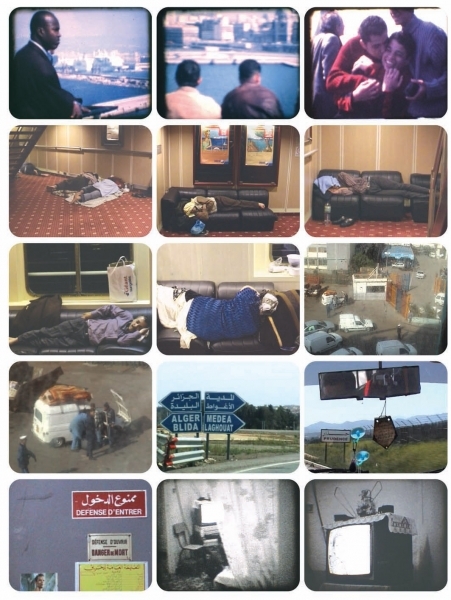2004
20mn Video Betacam
"Bledi a possible scenario de Katia Kameli est une vidéo en forme de voyage à rebours, une fiction construite autour de l’hypothèse utopique selon laquelle on pourrait revenir d’où l’on est parti : l’Algérie. En déjouant les pièges de la nostalgie, Katia Kameli suit le chemin qui mène jusqu’à la ville natal de son père. Le super huit noir et blanc empruntant son langage aux archives de famille ponctue le récit du voyage documenté par l’image numérique.
Jeux de montage, jeux de matières visuelles et sonores, orchestrent le temps syncopé de ce récit. Dans « Bledi a possible scenario », il n’est question de ni l’exotisme de l’enfance ni de celui d’un pays quitté. L’ argument de cette vidéo semble être l’entre deux de la mémoire et de la réalité".Léa Gauthier, critique d’art et rédactrice en chef du magazine
Mouvement "Bledi a possible scenario communicates the complexity and irreducibility of Algeria through its perpetual oscillation between incongruous visual and musical styles, as well as between languages and registers. The journey is filmed alternately in Super 8 and digital video, colour and on occasion black and white. Bledi switches between processed images and documentary-type images, moving or fixed images, and between ‘real time’ and high-speed sequences. The sense of irresolution and flux produced by the alternation between visual modes is compounded by the use of sound. The video is structured by three contemporary songs, which contrast sharply with one another in terms of language, style and lyrics: ‘Strange things’ by Echopark, a French electro-pop band, ‘Chkoune li moute’ (‘Who dies, who kills?’) an Algerian rap song by the highly political Double Kanon, and a song by female Algerian Raï singer Cheba Karima. There are also parts where women sing traditional Algerian songs. (Songs in Arabic are translated into French and given in subtitles.) These sources of subjective informa- tion are multiplied by the views of people the artist interviews on her journey, or reports we hear on a car radio. Throughout the video, image, sound and language (spoken, sung or written – on street signs or in the subtitles) are combined, and re-combined, to reveal ‘Algeria’ as a site of competing discourses, a culture in the constant process of ‘becoming’ (Stuart Hall 1990). We are presented with fragments of individual yet intersecting micro- narratives – alternative, partial, local perspectives, which together counter the persistently reductive, totalising images of Algeria in certain Western media". Siobhan Silton

